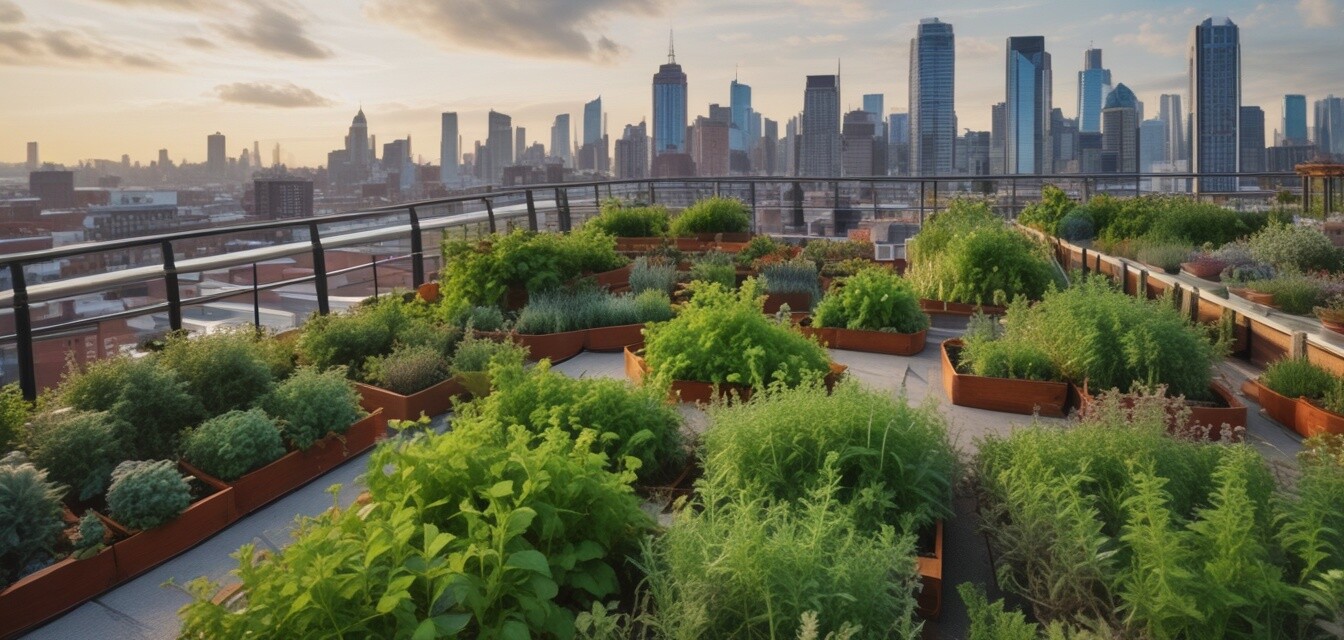
Innovative Solutions for Urban Agriculture
Key Takeaways
- Urban agriculture helps address food security in metropolitan areas.
- Technology plays a vital role in maximizing space and efficiency.
- Innovative techniques include vertical farming, hydroponics, and aquaponics.
- Sustainability and eco-friendliness are at the forefront of urban agricultural practices.
- Community involvement and education are essential for growth and success.
Urban agriculture is rapidly gaining recognition as a solution to many challenges faced by our modern cities. With rising populations and shrinking available land for farming, innovative solutions are emerging to maximize available space while promoting sustainable practices. Let's delve into some of these cutting-edge techniques and uncover how they're transforming our urban landscapes.
Understanding Urban Agriculture
Urban agriculture refers to the practice of cultivating, processing, and distributing food in urban areas. It can take various forms, from community gardens and rooftop farms to vertical farming systems. This form of agriculture not only combats food insecurity but also enhances community bonds while improving local environments.
Why is Urban Agriculture Important?
The significance of urban agriculture lies in its ability to provide fresh produce directly to city dwellers. Additionally, it plays a role in sustainability, helping to reduce transportation costs and carbon emissions associated with food distribution.
| Benefits of Urban Agriculture | Description |
|---|---|
| Food Security | Increases access to fresh produce for city residents. |
| Environmental Impact | Reduces carbon footprint and promotes sustainability. |
| Community Engagement | Encourages social interaction and teamwork among residents. |
| Innovation | Drives technological advancement in gardening techniques. |
Innovative Techniques in Urban Agriculture
With the growth of urban agriculture, many innovative techniques have been adopted to enhance productivity and sustainability. Here are some of the most noteworthy methods:
- Vertical Farming: Maximizes space by stacking layers of plants, allowing for higher yields in smaller areas.
- Hydroponics: Cultivates plants in a nutrient-rich water solution, eliminating the need for soil.
- Aquaponics: Combines fish farming with plant cultivation, creating a symbiotic environment.
- Community Gardens: Shared spaces for residents to grow their produce, promoting local involvement and education.
- Rooftop Gardens: Utilize otherwise unused rooftop space to grow food and install greenery.
The Role of Technology
Technology is revolutionizing urban agriculture, introducing new tools and systems that support efficiency and sustainability. Here are a few examples:
- Smart Sensors: Monitor plant health and soil conditions in real-time, ensuring optimal growth conditions.
- Mobile Apps: Provide urban farmers with guides, resources, and community connections.
- Automated Systems: Utilize robotics and AI to streamline planting, watering, and harvesting processes.
Pros
- Efficient use of land
- Access to fresh produce
- Environmental benefits
- Community bonding
Cons
- Initial setup costs can be high
- Maintenance requires knowledge and dedication
- Potential regulatory challenges
How to Get Involved in Urban Agriculture
Getting involved in urban agriculture can start from simple steps either by joining local community gardens or initiating your own projects. Here’s what you can do:
- Research local community gardens or urban farms.
- Participate in workshops and training sessions on innovative gardening methods.
- Volunteer for urban farms to learn and contribute.
- Start your own balcony or rooftop garden using simple DIY techniques.
Community and Education
For urban agriculture to thrive, community involvement and education play crucial roles. Community gardens serve as a platform for educating residents about sustainable practices, and initiatives often include educational workshops on gardening techniques.
Furthermore, as people engage in urban agriculture, they learn about the importance of food systems, nutrition, and sustainability, leading to a more informed and health-conscious community.
| Urban Agriculture Techniques | Soil-Based | No Soil |
|---|---|---|
| Conventional Farming | ✔ | ✘ |
| Hydroponics | ✘ | ✔ |
| Aquaponics | ✘ | ✔ |
| Vertical Farming | ✘ | ✔ |
| Community Gardens | ✔ | ✘ |
Final Thoughts
Urban agriculture is a promising avenue for addressing food sustainability in cities. Through innovative methods, technology, and community involvement, it’s possible to transform urban spaces into thriving agricultural hubs. By embracing these solutions, we can create healthier, more vibrant communities for generations to come. To delve deeper into related gardening topics, check out our Buying Guides for useful insights.